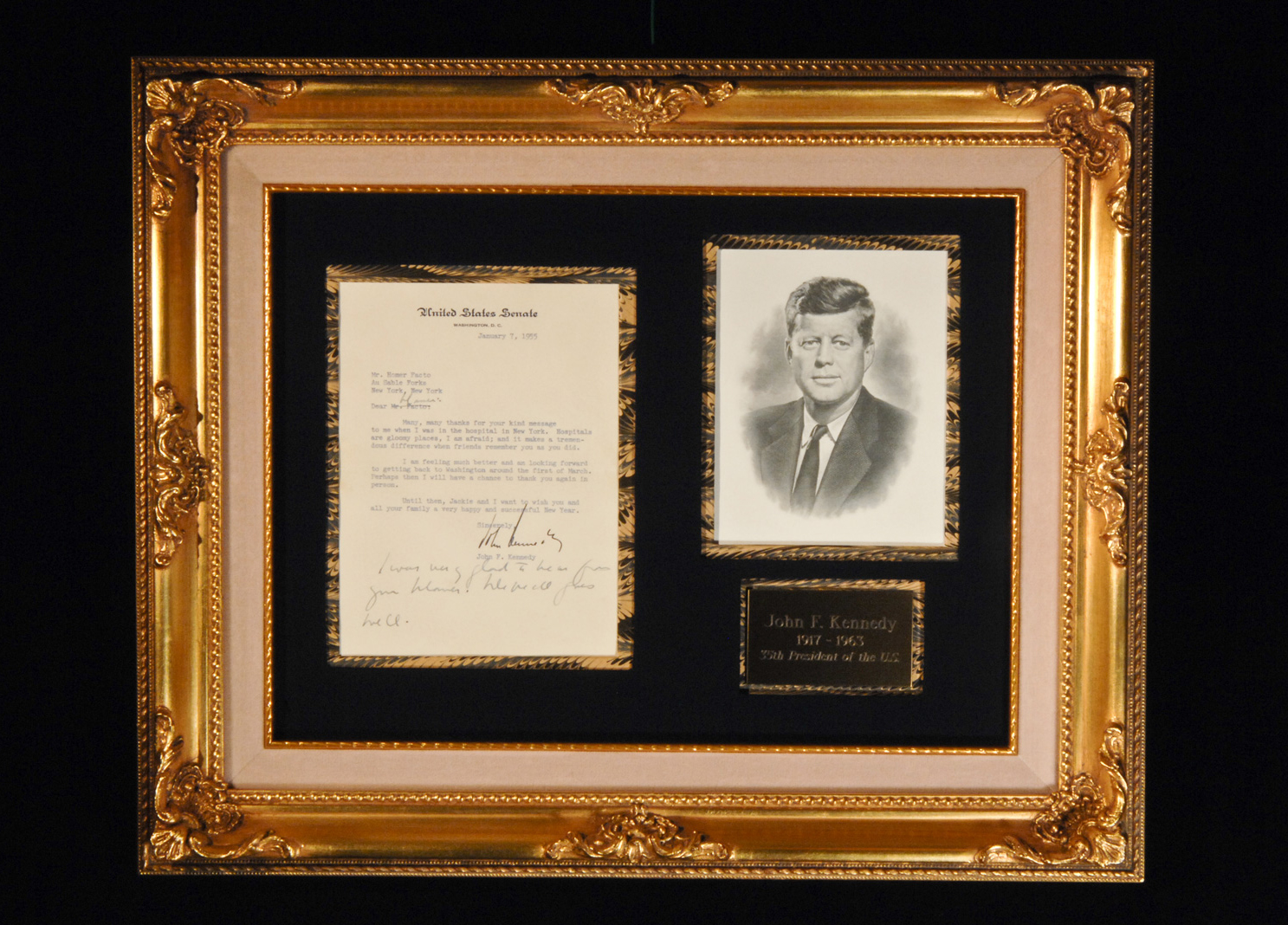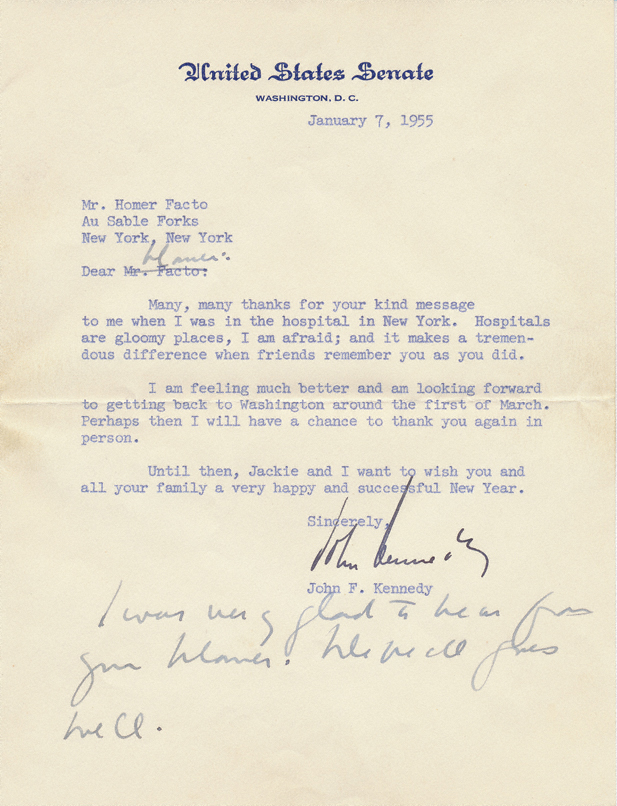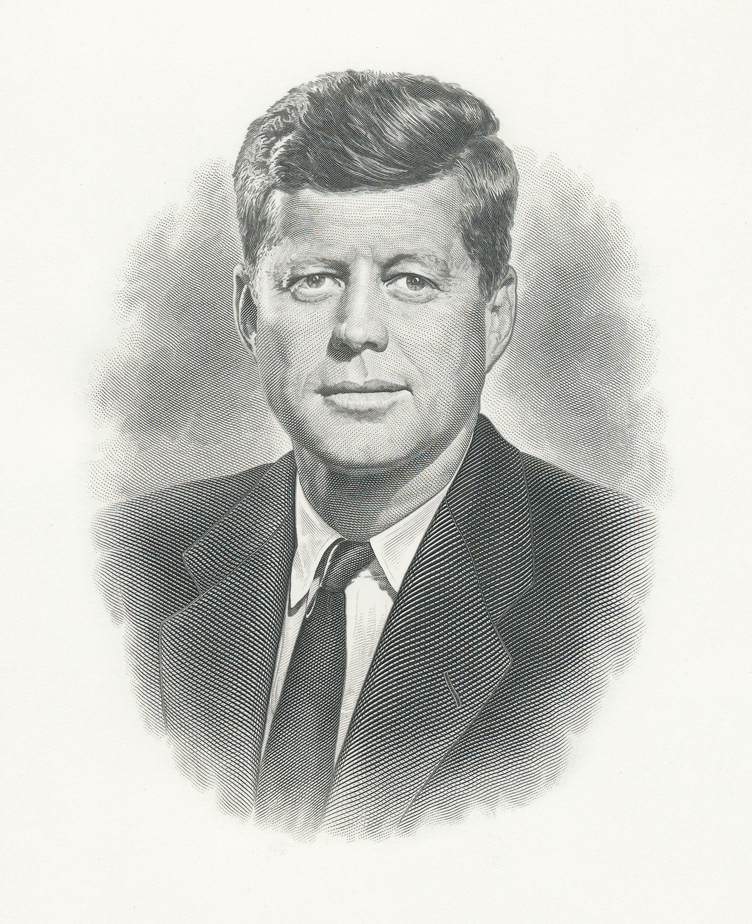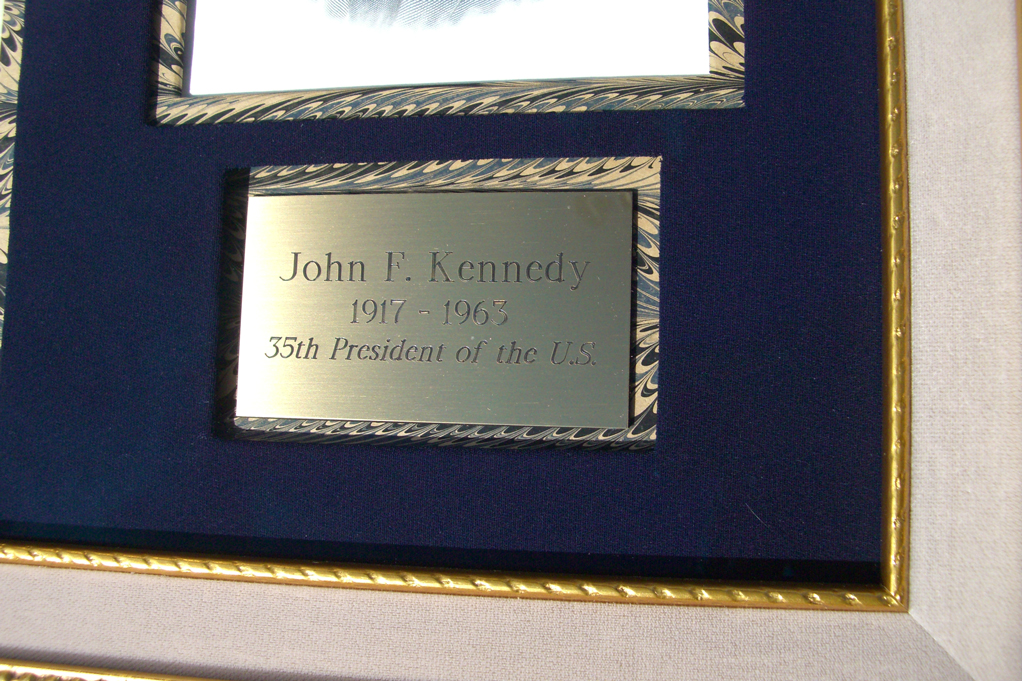John F. Kennedy
John F. Kennedy
Letter to PT-59 Navy Crewmate - 1955
John Fitzgerald Kennedy
was a prolific letter writer his short lifetime, many of the more important ones written while he was in the U.S. House of Representatives, then later in the United States Senate, and ultimately from The White House as President before his tragic death in 1963.
Typed Letter Signed with postscript holograph on US Senate letterhead, featuring scarce historic content from JFK’s Navy days, as well as intimate musings on the vagaries of health and the value of friendship. Kennedy writes to Homer Facto, one of his crewmen on PT-59, the Navy vessel Kennedy commanded after the sinking of PT-109. Personally signed, not secretarial or Autopen. JFK adds a personal note in his own hand at end of letter. Horizontal fold in center, very light toning on the sides at the fold, otherwise in fine condition.
The letter reads:
January 7, 1955
Mr. Homer Facto
Au Sable Forks
New York, NYDear
Mr. Facto: (personalizing it, JFK strikes out the name, writing “Homer” over it)Many, many thanks for your kind message to me when I was in the hospital in New York. Hospitals are gloomy places, I am afraid; and it makes a tremendous difference when friends remember you as you did.
I am feeling much better and am looking forward to getting back to Washington around the first of March. Perhaps then I will have a chance to thank you again in person.
Until then, Jackie and I want to wish you and all your family a very happy and successful New Year.
Sincerely,
John Kennedy
(JFK also adds a personal handwritten note): I was very glad to hear from you Homer. Hope all goes well.
About JFK When He Wrote This Letter
Kennedy was plagued much of his life by back problems. He had ruptured the same disc in his spine twice, once while playing college football, and again in World War II when, in the early hours of August 2, 1943, the Japanese destroyer Amagiri rammed PT-109 at sea, and JFK was slammed against the steel support of the cabin.
As she gradually sank during the day her eleven survivors abandoned ship, swimming to tiny Plum Pudding Island some miles away. Then a lieutenant (junior grade) in command of the vessel, Kennedy saved the life of his severely injured machinist Patrick McMahon by putting the strap of his life jacket in his teeth and towing him to safety. It took the rest of the crew five hours to reach Plum Pudding Island on a piece of wooden debris from the boat.
Owing to the physical demands he had endured in college and during the war, from a medical perspective Kennedy was a wreck. He was hospitalized more than three dozen times in his life, and received the last rites of his Roman Catholic faith no less than three times. Three months before writing this letter, in October 1954, JFK was admitted to the Hospital for Special Surgery in New York for back surgery. His post-operative healing was problematic, and he was not discharged from the hospital until December of that year.
This letter to Homer Facto, dated January 7, 1955, was written just weeks after Kennedy returned home to recuperate, and is a perfect example of how much JFK liked to stay in touch with his old PT-crew members over the years. During the same time he wrote this letter, Kennedy was working on Profiles in Courage, the book that would eventually win him the Pulitzer Prize in History.
What This Historical Letter Reveals about JFK
As was the case with the Motor Patrol Torpedo Boat 109, PT-59 was out of commission when JFK took command, it being converted into an experimental gunboat to be used as a weapon against enemy barges. The transformation involved removing the four torpedo tubes and replacing them with additional machine guns behind armor shields.
JFK’s PT-59 crew had five of the old PT-109 crew members, namely: Maquire, Mauer, Kowal, Drewitch and Drawdy. His new PT-59 crew were: Helmer, Christianson, Cline, Alexander, Servatius, Slagle, Scribner, Srickland and Homer Facto. As the boat’s machinist, it is highly probable that Facto was instrumental in converting PT-59 for its new skipper, now full Lieutenant John F. Kennedy.
In the best-selling book Johnny, We Hardly Knew Ye, JFK’s friends and advisors Kenneth O’Donnell and David Powers give us a wonderful insight into how grateful Kennedy was about letters of that time:
We remember the President one day in November showing us a letter from a retired Marine Corps colonel, W. T. Bigger of McLean, Virginia. Kennedy was obviously moved and pleased to receive the letter, although he tried to be casual about it. “This is a little incident in my Navy career that wasn’t written up in the Reader’s Digest,” he said.
Colonel Bigger’s letter, dated November 2, 1963, reminded the President that 20 years earlier, on the same date on 1943, Kennedy had taken his boat under heavy enemy fire to a beach on the Choiseul River where Bigger’s Marine riflemen were surrounded by the Japanese with their backs to the water.
“When all seemed lost,” the Marine officer wrote to the President, “you can well appreciate my relief to see the landing craft returning, escorted by PT boats, one commanded by you.” The landing craft lost its power, but Kennedy rescued the Marines in his boat and brought them safely back to their base. “As I recall, we both had our hands full and there was little time for amenities. Please accept again my heartfelt thanks,” the colonel wrote in his letter of twenty years later.
“Wasn’t it nice of him to go to the trouble of writing that letter to me?” the President said to us.
Just twenty days later, on November 22, President Kennedy was assassinated in Dallas, Texas.
About the Display
Befitting its value and historical significance, this letter has been professionally framed using the finest museum conservation-quality standards. Measuring 17” x 21” and featuring a fine engraving of JFK, each window is bordered with handmade Italian marbled paper in a blue and cream peacock motif. The top mat is lined in a deep presidential blue fabric (though it appears darker in photos), and the whole presentation comes together in an exquisitely carved, gilded cream felt-bordered wooden frame with the highest-quality museum glass. A brass plaque indicating the President’s name, lifespan dates, and his last title completes the ensemble.
If kept out of direct sunlight and maintained in a clean, temperate environment, this historic presentation will provide a lasting tribute to the memory and achievements of President Kennedy for generations.
All Vintage Memorabilia autographs are unconditionally guaranteed to be genuine. This guarantee applies to refund of the purchase price, and is without time limit to the original purchaser. A written and signed Guarantee to that effect accompanies each item we sell.




